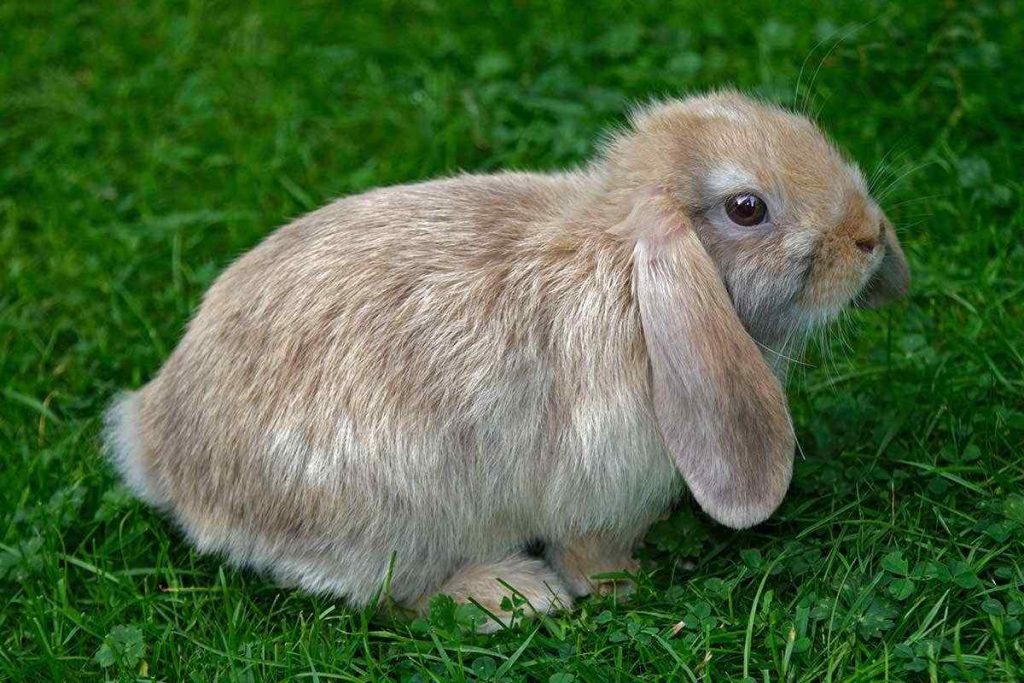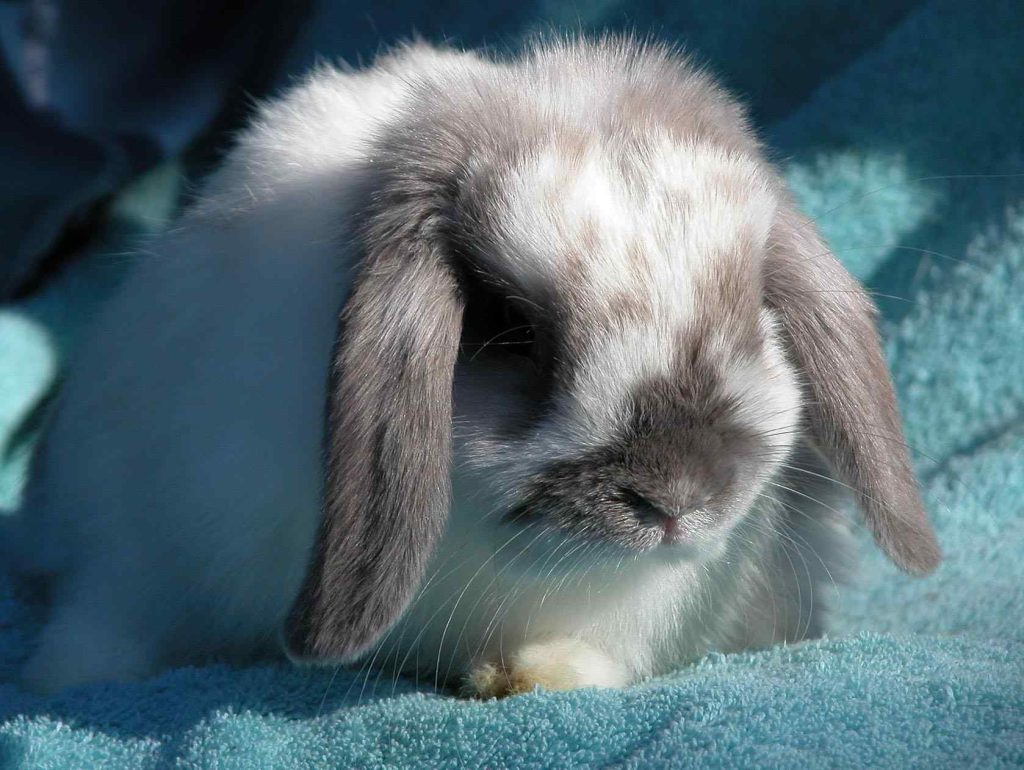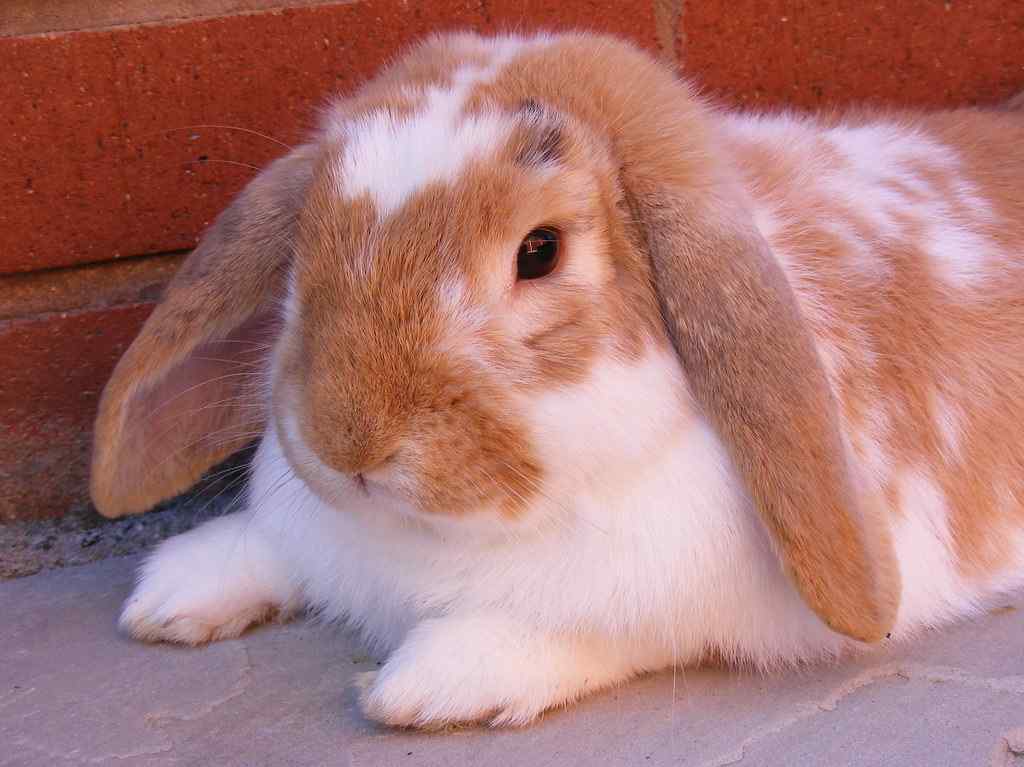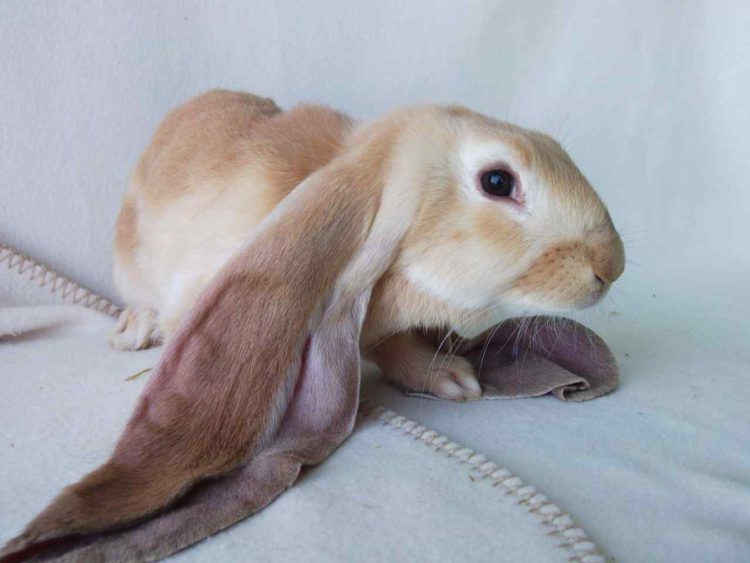In the captivating world of Lop Eared Rabbits, their floppy ears aren’t the only thing that’s long! As a veterinarian who’s had the pleasure of many bunny heartbeats echo in my stethoscope, I’ve been asked countless times, “How long do these charming creatures live?”
So, let’s hop into the heart of the matter and burrow down into the lifespan of these cuddly companions. With a twitch of our noses and a wiggle of our tails, we’re about to unravel the average lifetime of a Lop Eared Rabbit.
If you’re considering adding one to your family, or perhaps you’re a current bunny parent, then stick around – the years these furry friends have to share may just surprise you!
In a hurry? Here’s a quick & short answer that will help you save some time:
Lop-eared rabbits, on average, live between 5 to 7 years when kept as pets. However, with meticulous care involving a balanced diet, proper housing, regular exercise, and routine vet check-ups, these delightful companions can thrive up to 10 years or more, enriching your life with their playful energy.
Related: What Kills Rabbits At Night? – Full List Of Predators
Average Lifespan Of Lop-Eared Rabbits

Lop-eared rabbits are a popular breed of domestic rabbits known for their distinctive floppy ears. While these animals can be kept as pets and make great companions. It is essential to understand their lifespan to care for them properly.
On average, lop-eared rabbits live between 8 and 12 years if given good nutrition and proper veterinary care. This range is slightly longer than traditional short-eared breeds like the Dutch or Dwarf Lops.
The age at which a particular lop-eared rabbit reaches adulthood also impacts its life expectancy. Generally, most will reach maturity around six months old though this can vary based on diet and general health.
Once the adult size is reached, the rate at which aging occurs slows significantly so that these animals may experience long lifespans even with poorer veterinary care or inadequate diets.
Environmental factors such as temperature extremes can also affect the longevity of lop-eared rabbits.
Too much heat or cold can cause stress and other health problems that could shorten their lives. While providing comfortable temperatures helps keep them healthy into older age ranges.
Similarly, living outdoors, where they might encounter predators or other dangers, can reduce their life span. Whereas indoor environments usually provide more safety and security.
Finally, genetics play a role in how long lop-eared rabbits live:
Some lines may not be very hardy due to inherited health issues that could lead to shortened lifespans if left untreated by a veterinarian.
It is, therefore, important for owners to research potential health risks when purchasing one of these animals. Hence, they know what to expect regarding the overall lifespan and possible medical costs associated with caring for it throughout its lifetime.
With knowledge about these factors influencing life expectancy, pet owners should be able to better prepare themselves for having a lop-eared rabbit as part of their family for many years.
Factors Influencing Life Expectancy
The average lifespan of the lop-eared rabbit is around seven to ten years. This can be extended depending on how well they are cared for and if their diet follows specific guidelines.
Like humans, many factors influence the life expectancy of a lop-eared rabbit, such as genetics, environment, health care, and nutrition.
Genetics is essential in determining how long a lop-eared rabbit will live. Rabbits with good genes tend to live longer than those without them. The breed of the rabbit also affects its lifespan. Some breeds have longer lifespans than others due to genetic differences.
The environment is another factor that affects the life span of a lop-eared rabbit. A clean and comfortable living space helps keep rabbits healthy by reducing stress levels which can extend their life expectancy.
Additionally, exposure to extreme temperatures or drafts should be avoided as this could lead to serious health problems or even death in young rabbits.
Finally, providing excellent healthcare and maintaining a balanced diet are essential for extending a lop-eared lifespan. Regular checkups at the vet allow any issues to be identified early before they become more severe and affect the quality of life for the animal.
Furthermore, regular grooming sessions help maintain skin condition and overall health. At the same time, high-quality food provides much-needed nourishment.
Which leads to better physical development over time – all these things contribute positively towards increasing longevity in rabbits. Dietary requirements vary from one breed to another.
So it’s essential for owners to do research into what foods best suit their pet’ spet’s needs – correct nutritional intake ensures optimum growth rates and general well-being throughout the lifetime of the lop-eared rabbit.
Related: How Many Rabbits Can Live Together In One Cage?
Diet And Nutritional Requirements
Lop-eared rabbits require a balanced diet of hay, vegetables, and limited amounts of pellets to maintain their health. They also benefit from occasional fresh or dried herbs as treats. Essential nutrients that should be included in the rabbit’s diet include:
- Vitamin A: found in dark green leafy veggies such as kale, spinach, dandelion greens;
- Vitamin B Complex: found in whole grains and wheat grass;
- Calcium: found in trace amounts in hay and some vegetables;
- Fiber: found most abundantly in the hay.
Feeding them too many high-carbohydrate foods like fruits can cause digestive issues for lop-eared rabbits, so it is essential to monitor their intake closely.
Fresh water must always be available to these animals, ideally from a water bottle instead of an open bowl.
A healthy diet will help lop eared rabbits get the energy they need for proper exercise and activity. Owners need to provide ample space for hopping around and daily opportunities for physical activity.
Which helps prevent obesity-related illnesses common among domestic rabbits. Access to chew toys can help keep teeth appropriately trimmed down while providing mental stimulation through playtime activities.
Careful attention to dietary needs and appropriate environments where they can explore safely allow lop-eared rabbits to live long and happy lives with their human families.
Proper Exercise And Activity Levels
Lop-eared rabbits are active and curious animals that need appropriate exercise to stay healthy. To ensure your lop-eared rabbit lives a long, happy life, allowing them to engage in activities like running and playing is essential.
By providing these opportunities, you can help improve their physical and mental health. Providing toys, such as balls or other items they can play with, will encourage activity and keep them entertained.
Additionally, you should make sure that your rabbit has access to enough space so they can move around freely without feeling restricted.
Allowing your lop-eared rabbit to explore its living environment. Will promote good physical health and allow them to express its natural behaviors.
Proper exercise is essential for a lop-eared rabbit to live a whole life. Regular activity helps maintain strong muscles while allowing your pet rabbit’srabbit’s personality to shine through by allowing them to explore their surroundings at their own pace.
Taking steps like this will help ensure that your pet remains mentally and physically alert throughout its lifetime.
Grooming needs vary from breed to breed. But all rabbits require regular brushing and nail trimming regardless of type or coat length.
It is also essential for owners to check on the condition of their pet’s pet’s fur regularly. If there are any signs of matting, it should be addressed immediately. With professional grooming services or the careful use of clippers/scissors at home.
Proper hygiene habits must be maintained for a lop-eared rabbit’s rabbit’s lifespan potential to be reached – failure to do so could result in sickness or disease. Which would otherwise have been avoided had cleanliness standards been upheld consistently over time.
Grooming And Hygiene Habits

Grooming and hygiene habits are essential for the health of lop-eared rabbits. The following guidelines should be considered to ensure their well-being:
- Regular brushing is necessary to maintain a healthy coat, particularly during the shedding season. A wide-tooth comb or slicker brush can help remove loose fur and reduce hairballs that can form in the digestive tract if ingested.
- Cleaning the rabbit’srabbit’s ears with a damp cloth or cotton swab helps prevent ear mites from developing. It also ensures no wax buildup, which could lead to infection.
- Trimming nails regularly will keep them from splitting or becoming overgrown, as it can be uncomfortable for your pet when they become too long.
- Providing fresh hay daily gives your rabbit something to nibble on while helping to keep their teeth trimmed down naturally and aiding digestion by providing fiber in their diet.
These grooming tips benefit the overall health of a lop-eared rabbit and help them feel more comfortable and at ease in their environment.
Keeping these practices consistent and part of your routine will ensure they live happy, healthy lives – an essential step towards addressing any healthcare considerations associated with this breed of bunny.
Reated: What Do Rabbits Like To Sleep On?
Healthcare Considerations
Healthcare Considerations for Lop-Eared Rabbits
One important healthcare consideration for lop-eared rabbits is regular veterinary checkups. A case study of a five-year-old lop rabbit named Flopsy illustrates the importance of preventive care in maintaining these animals’ long-term health and wellness.
She was taken to her veterinarian every six months for a complete physical exam and routine laboratory tests such as blood work and urine analysis. During each visit, her teeth were also examined and trimmed if necessary.
In addition, she received vaccinations against common diseases that can affect pet rabbits, such as Myxomatosis, Rabbit Hemorrhagic Disease Virus (RHDV2), and Pasteurellosis.
Regular grooming should also be essential to your lop rabbit’srabbit’s healthcare regimen. Grooming helps to keep their fur healthy by removing dirt, debris, matted hair, and other allergens. From the coat while preventing mats or tangles from forming.
It would help if you brushed them at least once per week. Either with a soft brush or comb designed explicitly for rabbits.
Additionally, they may require occasional nail trims to ensure their nails are not too long or sharp:
This task should only be performed by trained professionals familiar with handling pet rabbits safely. To prevent dental disease in lop-eared rabbits.
It is essential to provide appropriate chew toys made of wood or paper materials to help wear down their continuously growing incisors.
These toys should be changed regularly so they do not become worn out. Dirty over time which could lead to infection in the mouth due to bacteria buildup.
Similarly, providing fresh hay daily has been shown to reduce tartar buildup on the surfaces of their teeth while supplying dietary fiber needed for proper digestion.
Finally, all owners must understand the signs associated with potential illnesses like diarrhea, respiratory infections, ear mites infestations, fleas, or ticks, among others.
Seeking immediate medical attention when any of these symptoms arise can prove instrumental in preserving your pet’spet’s overall well being throughout its lifespan.
With appropriate nutrition, hygiene habits, regular vet visits, and proper home environment management, lop-eared rabbits can live up to 10 years or even longer.
Depending on breed type and individual genetics factors contributing to longevity among members within this species group.
Habitat and housing requirements are crucial elements when caring for these unique pets since offering them adequate space tailored.
To specific needs allows them to reach maximum life expectancy without compromising the quality standards required from responsible ownership practices.
Habitat And Housing Requirements
Lop-eared rabbits are a domesticated species of rabbit that originated in Europe. These rabbits can be found living in captivity worldwide, and they have been successfully kept as household pets for generations.
Regarding housing requirements, lop-eared rabbits generally do best. When given some form of protection from extreme temperatures and precipitation.
An indoor enclosure or cabinet is ideal for these animals, with plenty of space to hop about and explore their environment. It is essential to provide them with ample areas to hide away if needed and access fresh hay for nesting purposes.
The average lifespan of lop-eared rabbits varies greatly depending on their diet, habitat conditions, and overall health status.
However, most pet owners can expect their lop-eared bunny companions to live anywhere between 8-12 years:
Good quality food sources and regular veterinary checkups will help ensure optimal longevity for these beloved furballs.
Additionally, providing adequate mental stimulation through activities such as playtime and proper exercise routines. Will also aid in promoting long life expectancy among this breed of a house rabbit.
When it comes to caring for lop-eared bunnies, certain behavioral and environmental factors should be taken into consideration at all times.
Proper socialization techniques such as gentle handling should be employed early on in the animal’sanimal’s life not to create any fear or anxiety issues later.
Likewise, creating a haven where the animal feels comfortable being alone during rest periods is vital to encouraging natural behaviors that would otherwise become inhibited due to stressors present in its surroundings.
Overall lop-eared rabbits must receive the necessary physical and emotional care throughout their lives to live comfortably and happily until old age sets in naturally.
Taking preventive measures against potential illnesses while understanding typical behaviors associated. With each stage of development can go a long way toward maintaining healthy relationships between human guardians and their furry friends.
Moving forward, exploring behavioral and environmental factors related to keeping these delightful critters happy must now be addressed more closely.
Behavioral And Environmental Factors

In rabbits, lop-eared breeds are a popular choice for many. Their lush fur and floppy ears bring joy to many households. But how long do these furry companions live?
By understanding the behavioral and environmental factors that affect a lop-eared rabbit’srabbit’s lifespan. Owners can gain insight into what life expectations may be expected from this beloved pet.
The average lifespan of a healthy lop-eared rabbit is between 8-10 years. With some living up to 12 years if given proper care. This range in age is due to several variables that play an essential role in determining the length of a rabbit’srabbit’s life:
- Quality diet
- Regular exercise
- Proper medical attention
A quality diet is essential for maintaining good health throughout the lifetime of any type of rabbit breed, including lop-eared rabbits. A healthy diet should include hay as the primary source of nutrition, along with fresh vegetables or pellets high in fiber content.
Avoiding sugary treats or human food can help reduce obesity, leading to serious health issues such as heart disease and diabetes.
Exercising regularly also helps to keep your bunny happy and active over time. Providing toys for them to explore will give them something stimulating to do indoors when the weather does not permit playing outside.
Additionally, providing places to dig and hide keeps them mentally stimulated so they don’t don’t become bored quickly. Setting off destructive habits like chewing furniture or other items around the house.
Proper medical attention must also be considered when caring for a lop-eared rabbit:
Yearly checkups by reputable veterinarians ensure early detection of potential illnesses before it becomes too difficult to treat effectively.
Vaccinations against myxomatosis are recommended since they can cause deadly infections quickly if left untreated. Lastly, spaying/neutering reduces aggressive behavior while improving overall health. Thus increasing chances of longevity even further.
When all these elements come together, owners have peace of mind knowing their beloved companion. Will stay happy and healthy longer than most expect rabbits typically would last—sometimes up to 10-12 years!
With just a few simple steps, anyone can enjoy having a loyal friend who loves unconditionally – one that lives well beyond the typical expectations associated with owning small pets like rabbits!
Related: When To Wean Meat Rabbits? – All You Need To Know
Conclusion
The life expectancy of lop-eared rabbits may vary depending on the individual’s health and lifestyle. Factors such as diet, exercise, grooming, healthcare, habitat requirements, and environmental influences can all affect their lifespan.
Therefore, proper management is essential to ensure these animals have the best chance of living long and happy lives. However, it should be noted that even with ideal conditions. There will still be a natural limit to how long these creatures live.
Although age cannot be eliminated in any animal species, owners of lop-eared rabbits can significantly extend their pets’ lifetime by providing them with a healthy environment and good care.





